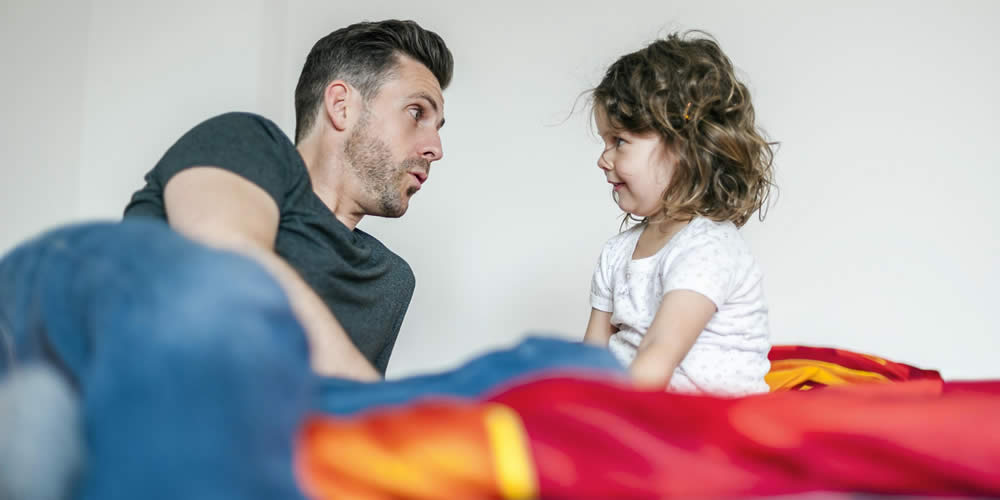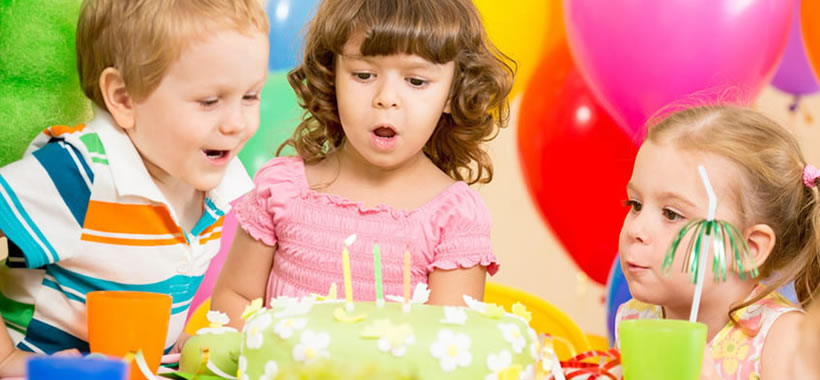Washing hair, cutting nails and Co. is a horror for many children. You can find tips and tricks on how to make it easier for you to take care of your little ones here

When it comes to hair-washing drama, sometimes only diving goggles help.
As much as we adults can love and enjoy personal care rituals, small children often loathe these procedures. After all, various grooming maneuvers are usually associated with sitting still or uncomfortable tugging on hair and skin.
wash hair
As long as children have no or hardly any hair, it is usually very easy and quick with the head wash: just briefly with the wet washcloth, done. But as soon as the little ones need shampooing for hair, the tragedy starts in the bathroom: crying, screaming and resisting regular washing of the hair make it a real ordeal. On the one hand there is the shampoo that runs into the eyes and can burn terribly there. And there is also the water that runs over the head, nose and mouth. When the children open their mouths in panic, a simple hair wash quickly turns into a big drama.
These tricks help:
- In any case, use a mild children’s shampoo that does not burn your eyes if possible.
- The smaller the children are, the more important it is for mom or dad to take a bath in the bath. Show your child that they don’t have to be afraid of water on their face or head. Take a fully soaked washcloth and squeeze it out over your own head. Or have your child shampoo it in return. Show your child how fun playing with water can be.
- Distraction is an important factor: fun water toys, but also small competitions ("How long can you look at the ceiling without moving?") can be very helpful.
- If the eyes are a critical issue and it doesn’t work to keep your eyes closed, then simply buy your little one a pair of diving goggles or a so-called shampoo protective shield.
- To rinse the shampoo in the bathtub "backstroke" work out. So when you rinse gently, there is no water in your eyes.
Tip from Irmi Müller-Gorman, pediatric nurse at Dr. from Haunerschen Children’s Hospital in Munich: "Children should get used to the feeling of water on their faces from an early age. It is best to run some water over the child’s face at the end of each bath, then most children will have no problem with it even at a later age."
Combing hair
But washing your hair successfully is not enough. Because after the head cleaning comes the combing. No problem for short-haired boys or girls. But what if the little princess on her long, possibly also thick, curly hair? Not only can you wash your hair, but you can also get a Ziep misery every morning. Countless nodules make every comb stroke an ordeal.
These tricks help:
- Since the scalp of children is sensitive, it is essential to ensure that plastic combs or brushes with hard tines are not used. It is best to switch to a brush with natural bristles. This reduces the first pain because the brush brushes away over the big knots. Overall, it takes a little longer, but hurts less.
- The same applies here: distraction! While you Combing her daughter can, for example, brush one of her dolls in parallel.
- Let the children go to bed with a braid in the evening, then the next morning the hair is not so knotted.
cut hair
For some children, the mention of the stimulus word has "hair stylist" an effect similar to that of the dentist. Sitting still, not moving and letting yourself go – most children don’t like that at all. Even if mom comes with scissors at home, it is often not better.
These tricks help:
- For at home: While mom is cutting, a book, a film, or a conversation with another family member can distract something.
- Good hand tools (hairdressing scissors, comb with fine prongs, possibly hair templates) make it easier and faster to cut.
- Before the first trip to the hairdresser, simply take the child with you to the adult hairdressing appointment and let them watch. In addition: Real professionals from the hair salon can usually handle the restless shakiness of children.
Pediatric nurse’s tip: "deflection is this The magic word: reading aloud or having a look at something are the best means for the child to hold the hairstyle at the hairdresser’s for the most part of a manageable length of time."
Cut nails
Children don’t really care whether their fingernails are too long, crooked or dirty. Regular nail care is necessary because of the risk of injury.
These tricks help:
- As with all other care treatments: Let mom and dad watch and show that it doesn’t hurt at all.
- It is best to take the child on your lap and take your hands or feet from behind and cut your nails carefully.
- Be sure to use rounded scissors especially for babies and children.
- Again, distraction in the form of radio plays or similar works miracles.
- In an emergency, a small reward also helps to keep you still.
Pediatric nurse’s tip: "Sometimes it is easier if you do without the scissors and just file the children’s nails. In the beginning, it may also be advisable to cut the children’s nails while they are sleeping."
Clean your ears
We adults like to take a cotton swab and clean our ears. When it gets uncomfortable, we feel it and can control it. It looks different with children. Here you should avoid using a conventional cotton swab to free the ear canals from ear wax.
These tricks help:
- Don’t bother too much ear wax. Ultimately, it moisturizes the skin in the ear canal and removes dust and dirt from the ear, among other things.
- Gently clean the ear cup with a damp cloth or a soft washcloth. Do not drill or force anything sharp into the ear canal. Clean only where you can easily reach it with your finger.
Pediatric nurse’s tip: "Care behind the ear is much more important than care in the ear. Many parents always forget that. It is best to drizzle a facial tissue with a little oil and clean the dirty edges behind the ear."
clean the nose
If mom came with the handkerchief, most children would like to take a break. Quite apart from the fact that the offspring do not know how to blow their nose for a long time.
These tricks help:
- Again, it helps: Show off! Take a deep breath and blow the air out of your nose so that your child can see what is important. It is best to practice this at times when your child is not having a cold.
- Nose balloons from the pharmacy: Similar to normal balloons, the stubs of these things are inserted into one nostril and then inflated by the air that is blown out by closing the other nostril. Suitable for children from three years.
- In order to learn to blow your nose, various practice games such as blowing away (through your nose!) A cotton ball or a small down feather are recommended.
- Be patient: Most children only learn to blow their nose when they are about four years old.
Pediatric nurse’s tip: "Children are more likely to tolerate fingers than handkerchiefs. That’s why I recommend washing the child’s nose with water at the sink and cleaning it carefully with my fingers."
RELATED ITEMS
-

What if the child doesn’t want to go to daycare? Baby and family
Yesterday the child happily went to crèche or kindergarten, today there is protest and roar. What is behind it? Today: thumbs down for that…
-

Proper communication with children – baby and family
Sometimes tots do exactly the opposite of what you expect them to do. In five situations we show how to communicate with…
-

Migrate in children: what helps against it – baby and family
Children also suffer from migraine attacks: stress can trigger headaches. How parents can help their little ones This video explains…
-

Children’s birthday: celebrate without stress! Baby and family
Where to celebrate Invite someone? Which games? What’s for dinner? Many parents panic at the thought of children’s birthday. With our tips…
